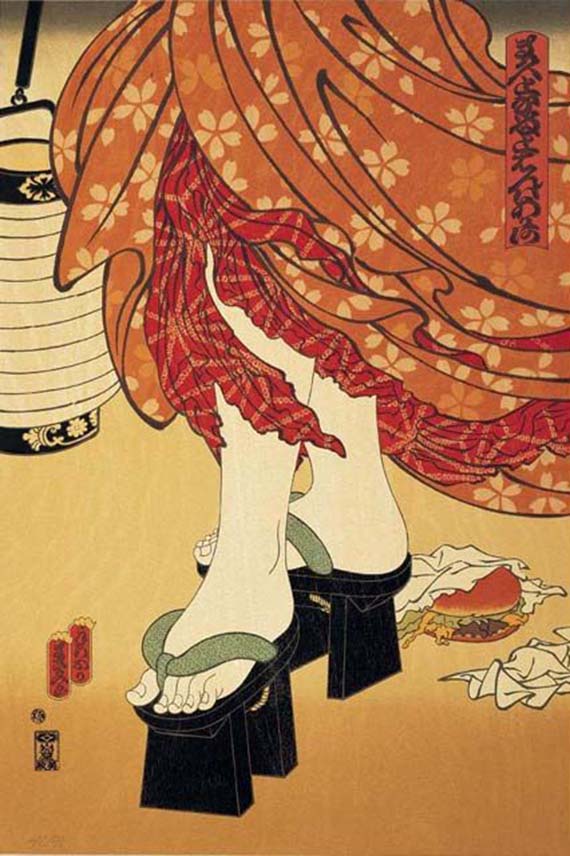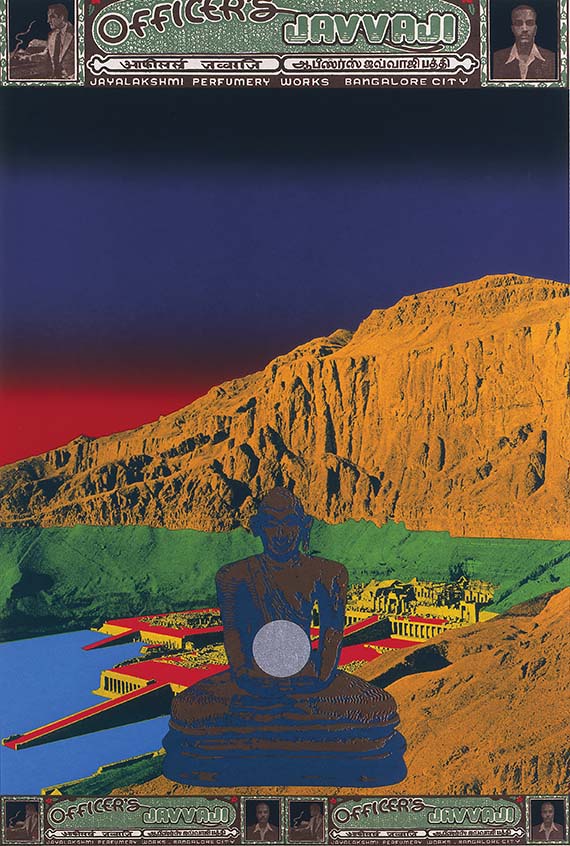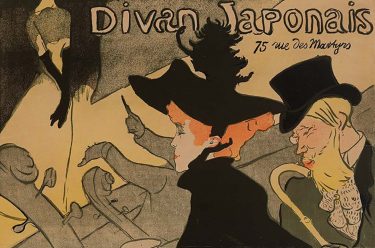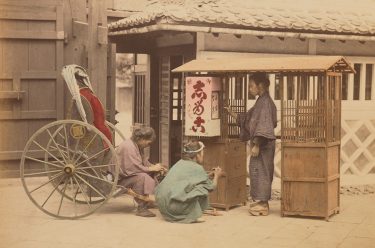
Despite a nostalgic turn to the past, writes Morris Low, printmakers in postwar Japan were increasingly open to international influence. ‘Hanga’ not only showcases the Gallery’s stunning collection of historical and contemporary prints but also illustrates how important the medium was, and still is, in Japan.
‘Hanga’ pays homage to the modern Japanese print movement and its key exponents, showcasing examples of sōsaku-hanga (creative prints) by major artists that were created in the shadow of Japan’s defeat in the Pacific in 1945 and during the decline of the traditional ukiyo-e 1 print.
After the war, Japanese artists increasingly produced prints. The woodblock was still highly favoured — it is estimated that, until 1975, about half of the professional print artists in Japan still used the woodblock as their primary technique. Artists such as such as Saitō Kiyoshi (1907–97), Sekino Jun’ichirō (1914–88) and Sasajima Kihei (1906–93) sought to depict a peaceful Japan by emphasising its traditional culture, its ancient religions, architecture and landscape. Sekino was particularly skilled in portraits of Bunraku and Kabuki actors — his Bungorō on stage 1953 depicts a renowned puppeteer. Yoshida Tōshi (1911–95) specialised in tranquil landscapes. His prints of Mount Fuji from 1962 evoke the ukiyo-e of old, rather than a Japan that was experiencing high economic growth.

Despite this nostalgic turn to the past, in terms of content, printmakers were increasingly open to international influence. Saitō’s works have a sensibility that is arguably Japanese, yet he looked to the prints of Edvard Munch and Paul Gauguin for inspiration rather than the ukiyo-e masters. Saitō came to international prominence when his works won a prize at the São Paulo Biennale in 1951, and he subsequently travelled to the United States. However, artists continued to draw on East Asian traditions associated with calligraphic mark-making. Lee Ufan was born in Korea in 1936, moving to Japan two decades later. His drypoint prints from 1986 show the tool moving across the plate to create a record of the material properties of the encounter. Prints by female calligrapher and painter Shinoda Tōkō (b.1913) also show the artistic process. Her work was exhibited at New York’s Museum of Modern Art (MoMA) in 1954, and she lived in New York during 1956–58. Her lithographs bring together traditional calligraphy with Abstract Expressionism.
The possibilities offered by silkscreen techniques were not fully explored by Japanese artists until after the war. The rainbow-coloured prints by Ay-Ō (b.1931) make the most of the medium, as do prints by conceptual artist Arakawa Shūsaku (1936–2010), which combine colour lithography with screenprinting. Both artists sought to go beyond mere aesthetics. Arakawa arrived in New York in 1960 and became known for works that interrogate the intertextuality of meaning between the visual and verbal. His work was influenced by his mentor, Marcel Duchamp. Ay-Ō has long been associated with the Fluxus movement, having been introduced to George Maciunas in 1961 by Yōko Ono and joining Fluxus in 1963. His image Finger box (from the ‘Rainbow Landscape’ series) 1974 seems to have borrowed an image from an ukiyo-e print.
Graphic designer and printmaker Yokoo Tadanori (b.1936) became interested in mysticism and psychedelia around this time. His busy, colourful prints are inspired by ukiyo-e prints and Pop art, exhibiting works as part of ‘Word and Image’ in 1967 at MoMA. In 1974, he travelled to India, which resulted in his ‘Shambhala’ portfolio of screenprints. The mythical city of Shambhala, better known as Shangri-la, features in Tibetan Buddhist art and culture, most recently in the work of Gonkar Gyatso, who is also represented in the QAGOMA Collection.

In the 1960s, Teraoka Masami (b.1936) left Japan to study in Los Angeles. Using the flat and graphic style of ukiyo-e prints, he produced memorable images that comment on the ‘Americanisation’ of Japanese culture. The result of cross-cultural encounters by Japanese artists engaging with the rest of the world (especially the US), they are images that make the most of Japan’s traditions while exploring new depths in meaning.
From the early influence of sōsaku-hanga to the innovation and experimentation of printmakers of the late twentieth century, ‘Hanga: Modern Japanese Prints’ demonstrates the importance of the medium to contemporary art in Japan, and acknowledges Japanese artists as leaders in the global practice of printmaking.
Dr Morris Low is Associate Professor of Japanese History at the University of Queensland’s School of History, Philosophy, Religion and Classics.
Endnote
1 Classic woodblock prints that were produced as part of a collaborative process and often depicted beautiful women and Kabuki actors.
Hanga: After Hours Special Insights Tour | Join Morris Low after hours in the Queensland Art Gallery for a special tour of ‘Hanga: Modern Japanese Prints’, where he will provide insights into the display and reveal little-known stories about the artists and prints that make up this fascinating exhibition. Professor Low will also discuss key figures who have promoted Japanese prints in Brisbane, and provide insider tips for budding collectors.
Hanga: After Hours Special Insights Tour | 6.00pm Wednesday 20 August | Gallery 6, QAG | Free, entry to the Gallery for this program is via Stanley Place

